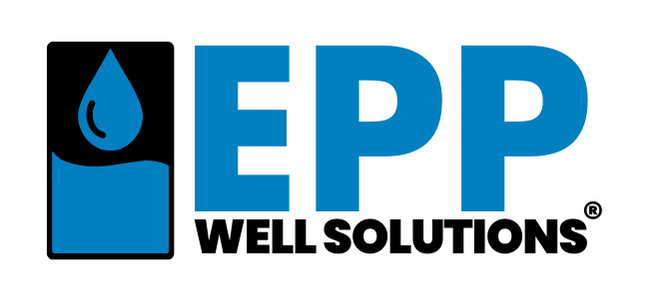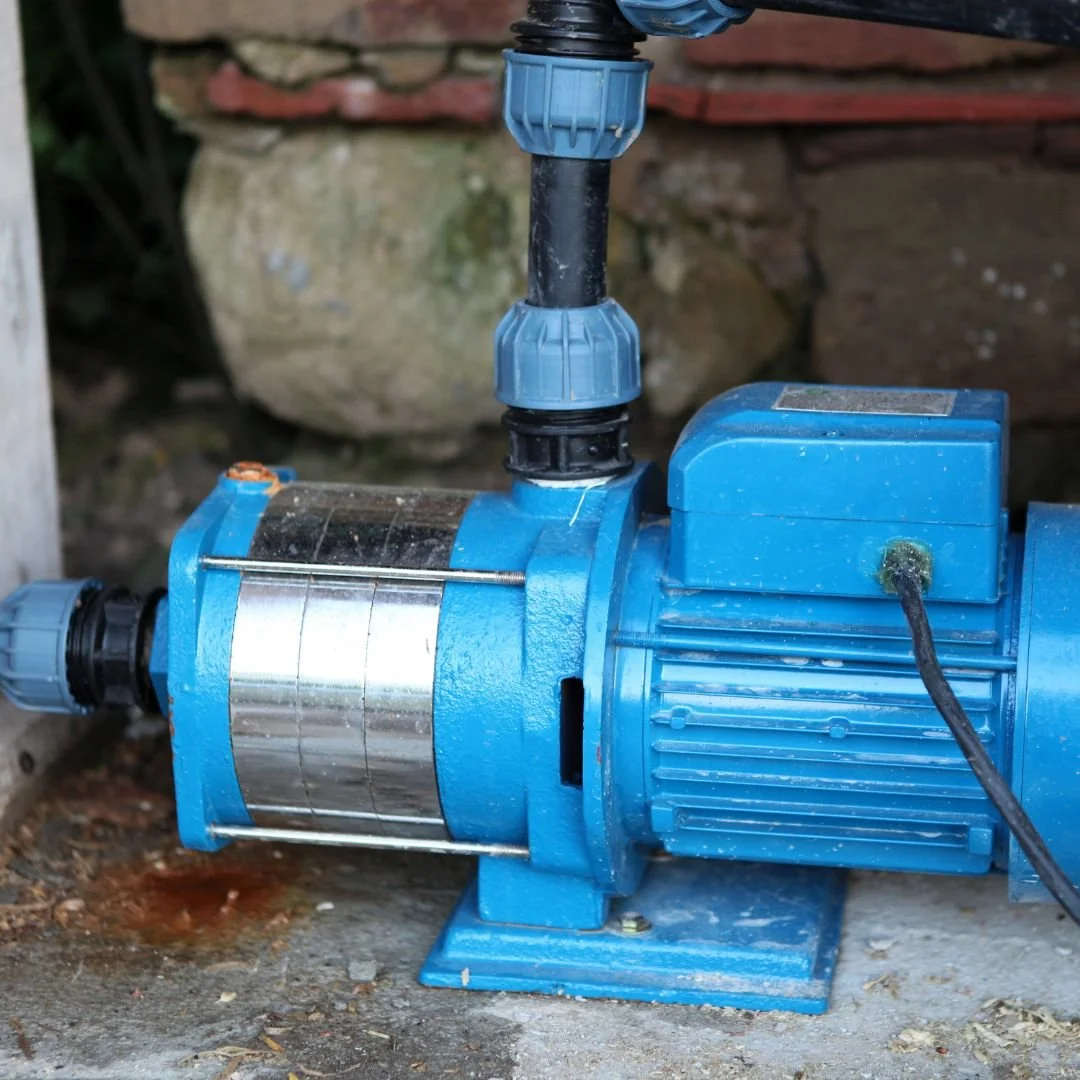Booster Pumps VS Water Storage Solutions
For homeowners relying on private wells, ensuring a reliable water supply and consistent pressure is essential for daily tasks like showering, laundry, and irrigation. However, low-yield wells or systems with inadequate pressure can struggle to meet demand, especially during peak usage times. Two common approaches to address these issues are booster pumps, which increase water pressure, and water storage solutions, which store water to meet demand. Each has unique benefits and limitations, particularly for low-yield wells producing less than 1 gallon per minute (GPM). This article compares booster pumps and water storage solutions, explores their applications, and highlights the best solution.
Understanding Booster Pumps and Water Storage Solutions
Booster Pumps are devices that increase water pressure in a plumbing system by boosting the flow from the well or water source. They are ideal for homes with adequate water volume but low pressure (below the optimal 40–60 psi), such as those on shared wells or municipal systems. Booster pumps work by drawing water from the source and pushing it through pipes at higher pressure, ensuring strong flow for showers, appliances, or irrigation. They are compact, typically cost $500–$2,000, and integrate with existing pressure tanks.
Water Storage Solutions, such as large pressure tanks or dedicated storage systems, store water to meet demand when the well’s output is insufficient, particularly for low-yield wells. These systems collect water over time, delivering it during peak usage to maintain pressure and supply. They are critical for wells that cannot produce enough water (e.g., <1 GPM) to meet household needs, like 200–300 gallons in a few hours for a family of four.
Both solutions address water delivery challenges, but their suitability depends on the well’s yield, pressure needs, and household demand.
Booster Pumps: Pros and Cons
Pros:
Increased Pressure: Booster pumps deliver high pressure (40–60 psi), ideal for multi-story homes where gravity reduces pressure by 4.3 psi per 10 feet of elevation, ensuring strong flow for showers or appliances.
Compact Design: They require minimal space, fitting easily in basements or pump houses, and integrate with existing systems.
Cost-Effective for Adequate Wells: For wells with sufficient yield (>5 GPM) or shared/municipal systems, booster pumps are a relatively affordable solution ($500–$2,000) to address low pressure.
Cons:
Limited by Well Yield: Booster pumps cannot increase water volume, so they’re ineffective for low-yield wells (<1 GPM) where supply, not pressure, is the issue. They rely on how much water the well holds and can deliver.
Pump Wear: Continuous operation during peak usage times can overwork the pump, shortening its lifespan (typically 10–15 years) and increasing repair costs ($500–$1,500).
No Storage Capacity: Without additional storage, booster pumps cannot compensate for supply shortages during high demand, leading to pressure drops.
Booster pumps are best for homes with adequate water volume but insufficient pressure, such as those on shared wells or municipal systems.
Water Storage Solutions: Pros and Cons
Pros:
Meets High Demand: Storage solutions collect water over time, delivering it during peak usage times (e.g., 200–300 gallons for a family of four), ideal for low-yield wells that cannot produce enough water instantly.
Reduces Pump Cycling: By storing water, these systems reduce pump on-off cycles, extending pump life and saving energy.
Versatile for Low-Yield Wells: They address the core issue of limited supply, ensuring consistent flow even when well output is low.
Cons:
Space Requirements: Large tanks (e.g., 215–430 gallons) often require significant space, which may be challenging for small properties or pump houses.
Higher Initial Cost: Advanced storage systems can cost thousands of dollars, more than basic booster pumps, though they offer long-term savings for low-yield wells.
Maintenance Needs: Tanks require periodic checks for air pressure, leaks, or sediment buildup, especially if water quality is poor.
Water storage solutions are ideal for low-yield wells where volume, not just pressure, is the primary concern.
Choosing Between Booster Pumps and Water Storage Solutions
Selecting the right solution depends on your well’s characteristics, household needs, and budget:
Well Yield: Test your well’s output (e.g., time to fill a 1-gallon bucket; 60 seconds equals 1 GPM). If yield is adequate (>5 GPM) but pressure is low, a booster pump is sufficient. For low-yield wells (<1 GPM), a storage solution is necessary to meet demand.
Household Demand: A family of four needs 320–400 gallons daily, with 200–300 gallons during peak usage times. Booster pumps work for high-pressure needs with sufficient supply, while storage solutions support high volume for low-yield wells.
Pressure Needs: For multi-story homes or high-demand appliances (e.g., irrigation at 10–20 GPM), booster pumps address pressure drops, while storage solutions ensure supply.
Space and Budget: Booster pumps are compact and cheaper upfront ($500–$2,000), while storage solutions require more space and investment ($3,000–$8,000) but are critical for low-yield wells.
Maintenance Preferences: Booster pumps need pump maintenance, while storage systems require tank checks for air pressure or sediment. Choose based on your ability to maintain the system.
Consult a professional to assess well yield, pressure, and compatibility with your plumbing system to ensure the chosen solution meets your needs.
The Well Harvester: The Best Water Storage Solution for Low-Yield Wells
For homes with low-yield wells struggling to meet demand during peak usage times, the Well Harvester from Epp Well Solutions is the best water storage solution. Unlike booster pumps, which rely on adequate well output, or standard pressure tanks, which offer limited storage, the Well Harvester is designed for wells producing low GPM, ensuring a reliable supply and consistent pressure (40–60 psi). It uses real-time water level monitoring to adjust pump operation, preventing over-pumping, which can deplete the well or cause damage during high-demand periods, such as simultaneous showers and appliance use.
The Well Harvester stores water to meet household needs, delivering steady flow for appliances like washing machines (15–30 gallons per load) or irrigation, even in multi-story homes. Its smart automation adapts to changing water tables, optimizing extraction without manual adjustments. A user-friendly interface allows monitoring of usage and system performance, ensuring reliability during peak times. Unlike rehabilitation, which temporarily boosts yield but doesn’t address storage needs, the Well Harvester provides a long-term, low-maintenance solution. Its robust warranty ensures durability, making it the top choice for low-yield well owners seeking to optimize water supply and pressure.
Complementary Strategies for Well Optimization
To enhance the Well Harvester’s effectiveness or complement a booster pump, adopt these practices:
Test Well Yield: Verify output annually to ensure the system matches demand, especially for low-yield wells.
Maintain Components: Check pressure tank air settings (2 psi below pump cut-in, e.g., 28 psi for a 30/50 switch) and inspect pumps for wear to support consistent pressure.
Use Low-Flow Fixtures: Install showerheads (1.5–2.5 GPM) and faucets (1–2 GPM) to reduce demand, easing strain during peak usage times.
Monitor Water Quality: Test for sediment or bacteria yearly to prevent clogs that reduce flow or pressure, using filters if needed.
Schedule Usage: Spread high-demand tasks (e.g., laundry, irrigation) to off-peak hours to maintain system efficiency.
These measures ensure optimal performance, whether using a booster pump for pressure or the Well Harvester for low-yield wells.
Booster pumps and water storage solutions address different well system challenges: pumps boost pressure for adequate wells, while storage solutions ensure supply for low-yield wells. Booster pumps are compact and cost-effective but ineffective for low volume, while storage systems meet high demand but require space. For low-yield wells struggling during peak usage times, the Well Harvester from Epp Well Solutions is the best water storage solution, using smart management to deliver consistent pressure and supply while preventing over-pumping. By pairing the Well Harvester with maintenance, efficient fixtures, and scheduled usage, homeowners can optimize their well system for reliable performance.

